Abstract
1. The effects of furosemide given as constant i.v. infusion (7.5 mg kg-1 h-1) or bolus injections (0.5, 7.5 and 120 mg kg-1) on renal haemodynamics and proximal tubular Na reabsorption were studied in conscious water diuretic rats. The clearance of Li (CLi) was used as marker for Na delivery from the proximal tubules, and clearance of [14C]-tetraethylammonium (CTEA) and [3H]-inulin (CIn) as markers for renal plasma flow (RPF) and glomerular filtration rate (GFR), respectively. 2. Furosemide caused a transient increase of RPF and GFR followed by a secondary decrease below baseline levels; the latter could in part be counteracted by volume replacement. The filtration fraction (FF = GFR/RPF) was not significantly changed by furosemide. Fractional proximal Na excretion (CLi/CIn) was significantly increased by all doses of furosemide independent of changes in RPF, GFR and FF. 3. The peak diuretic/natriuretic effect of furosemide was markedly potentiated by volume replacement, probably due to prevention of antinatriuretic mechanisms triggered by volume depletion. 4. It is concluded that following i.v. furosemide administration there is a biphasic change in renal haemodynamics in conscious, restrained rats, and that the inhibition of proximal Na reabsorption, as manifested by changes in fractional Li excretion, is not likely to be due to changes in total renal haemodynamics.
Full text
PDF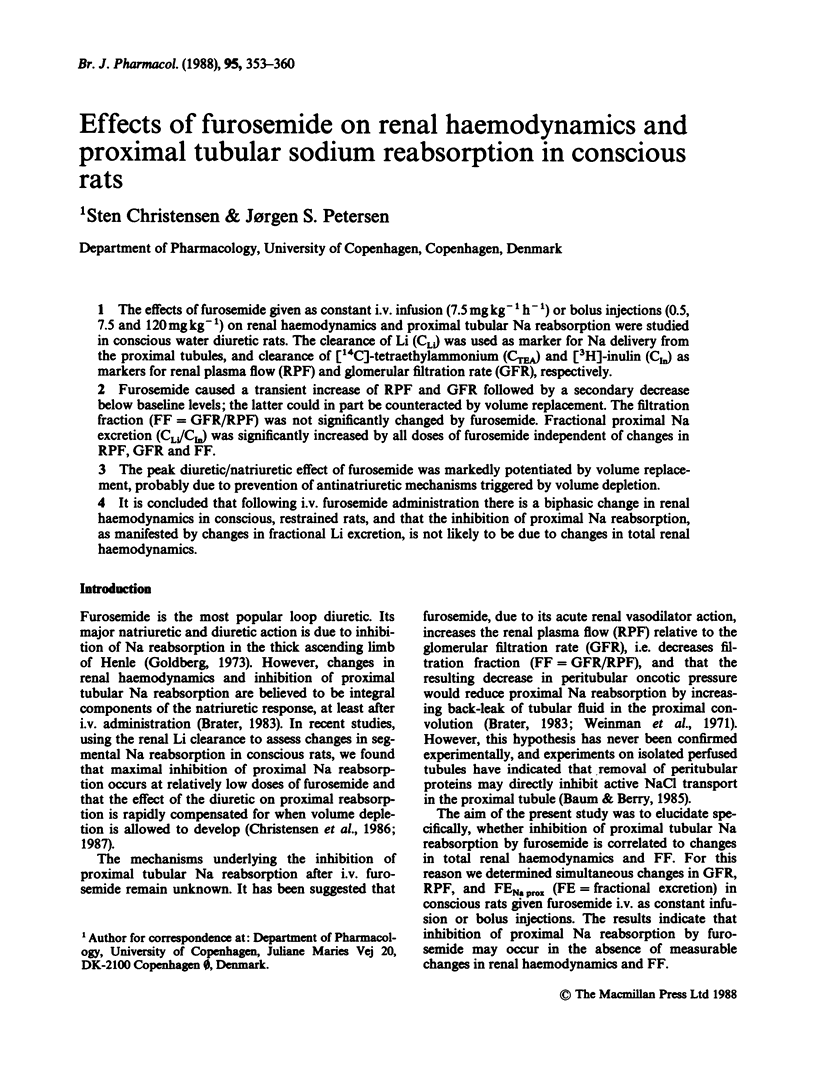
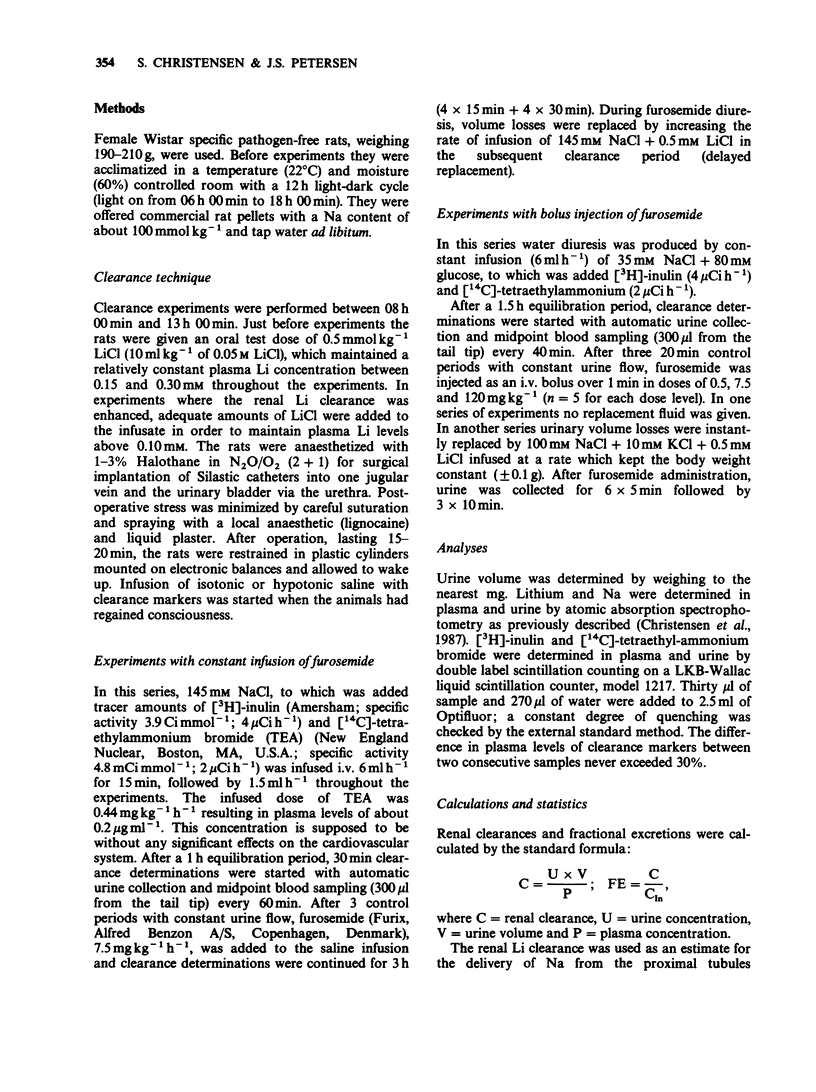
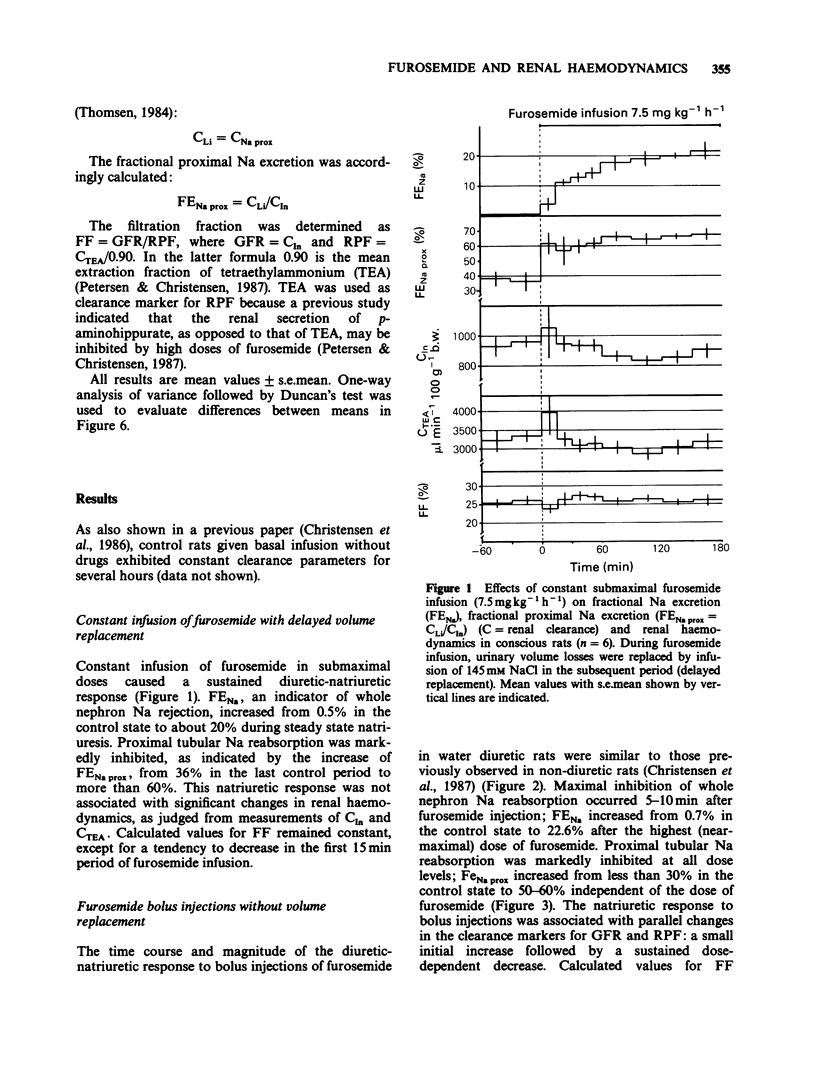
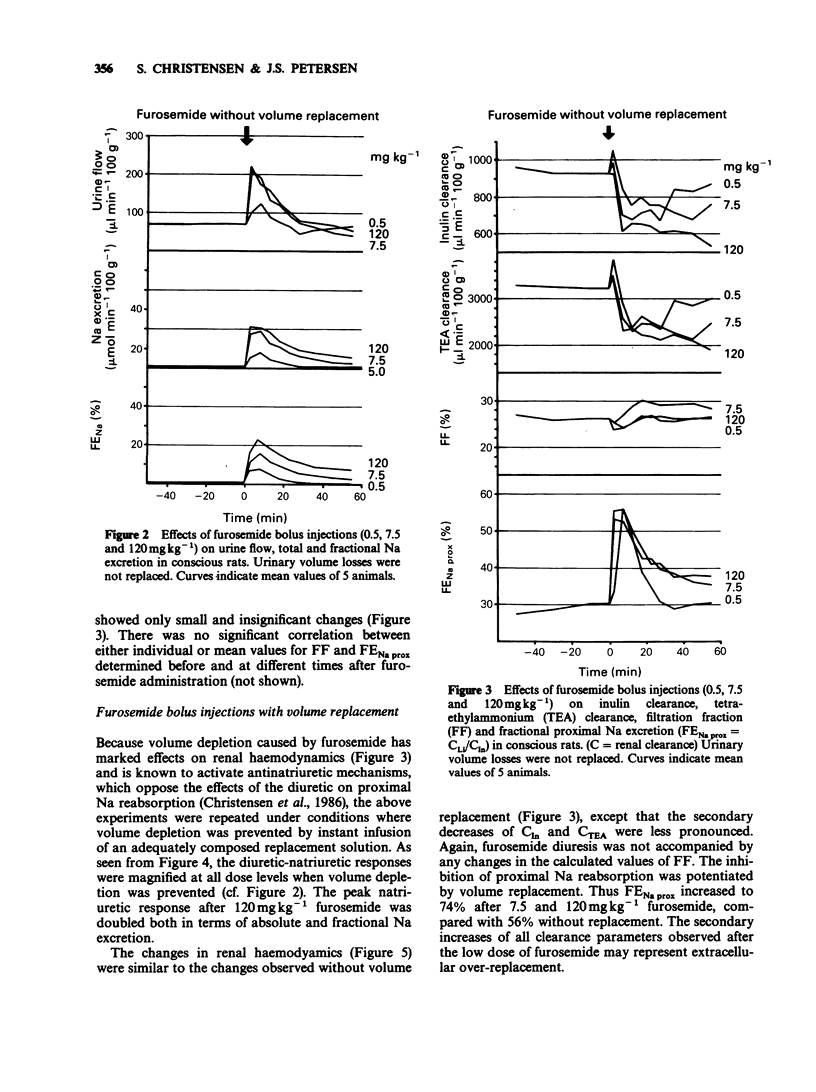
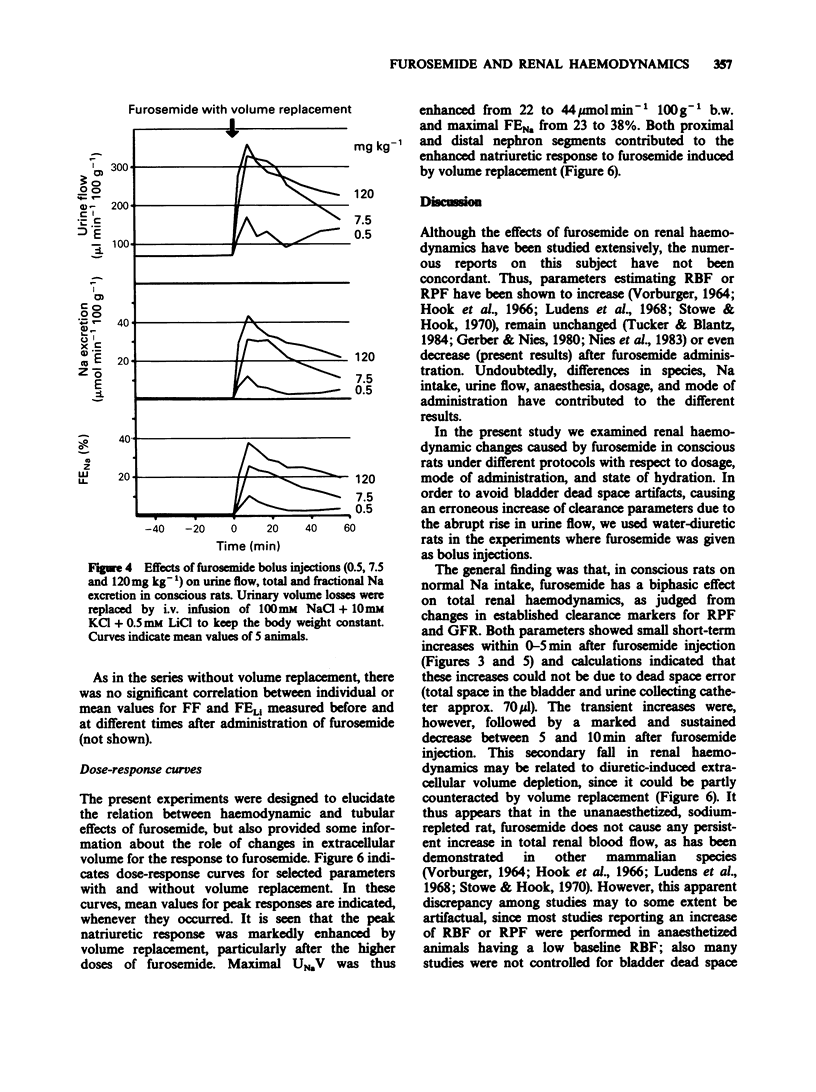
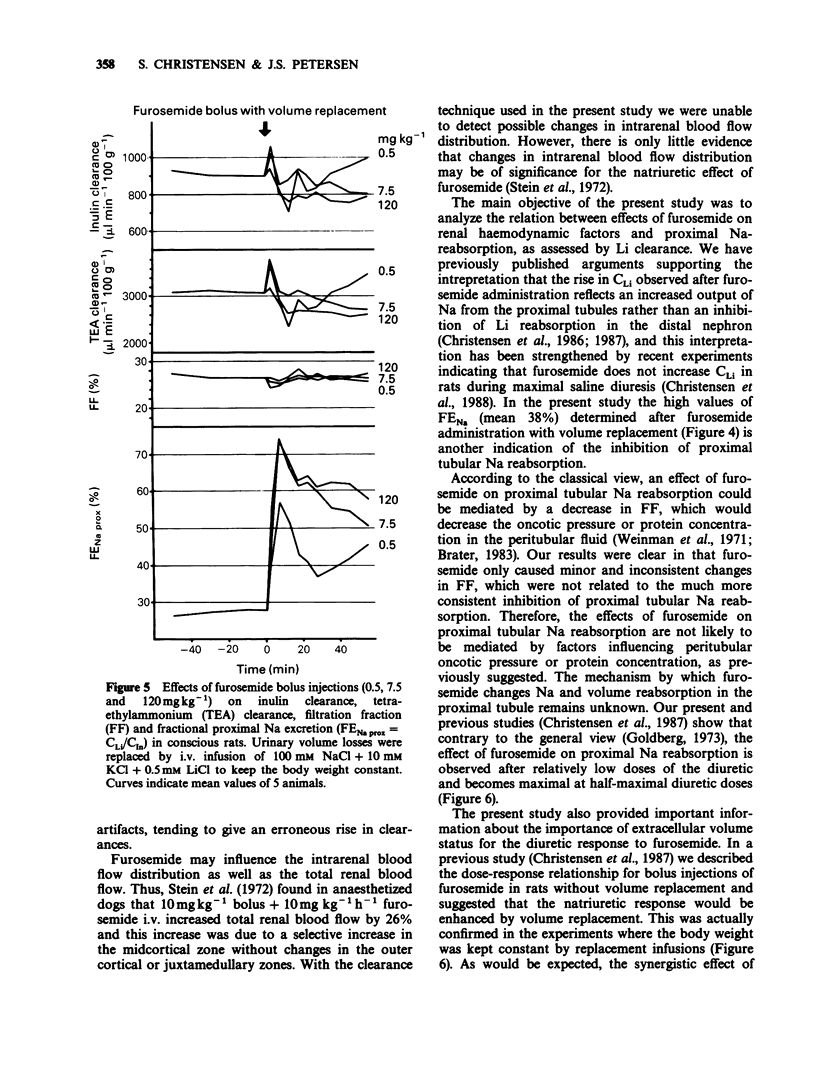
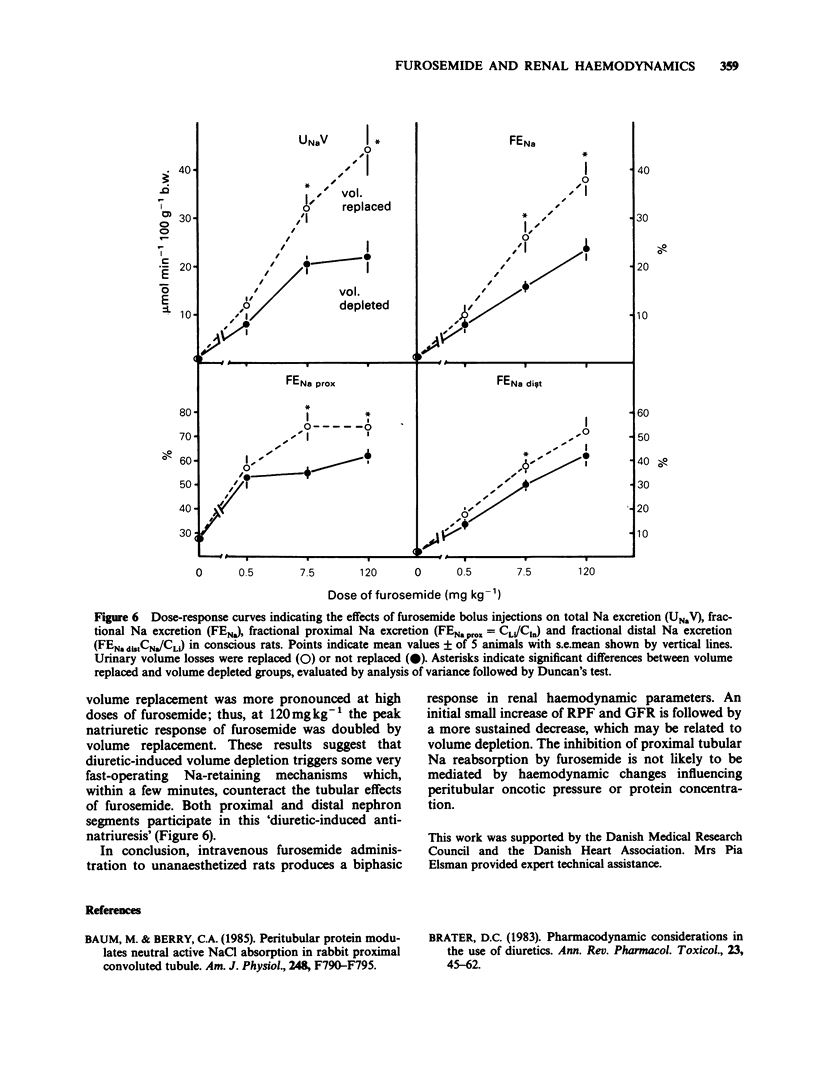
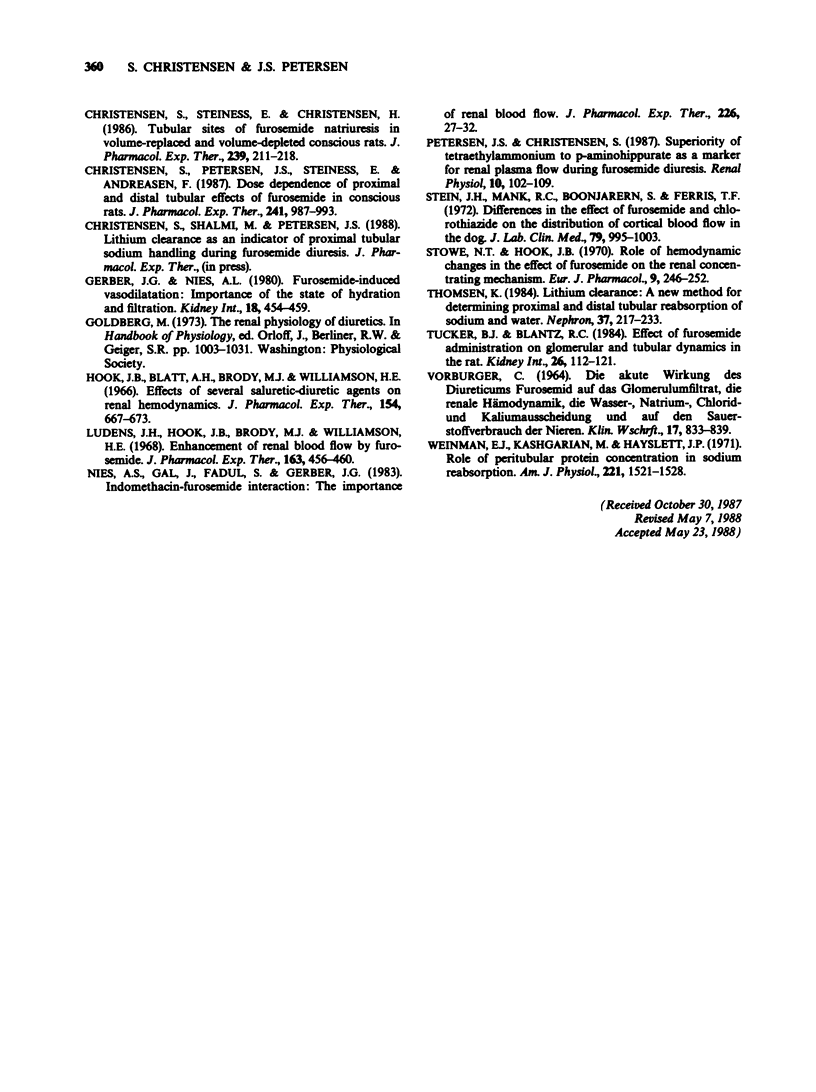
Selected References
These references are in PubMed. This may not be the complete list of references from this article.
- Baum M., Berry C. A. Peritubular protein modulates neutral active NaCl absorption in rabbit proximal convoluted tubule. Am J Physiol. 1985 Jun;248(6 Pt 2):F790–F795. doi: 10.1152/ajprenal.1985.248.6.F790. [DOI] [PubMed] [Google Scholar]
- Brater D. C. Pharmacodynamic considerations in the use of diuretics. Annu Rev Pharmacol Toxicol. 1983;23:45–62. doi: 10.1146/annurev.pa.23.040183.000401. [DOI] [PubMed] [Google Scholar]
- Christensen S., Petersen J. S., Steiness E., Andreasen F. Dose dependence of proximal and distal tubular effects of furosemide in conscious rats. J Pharmacol Exp Ther. 1987 Jun;241(3):987–993. [PubMed] [Google Scholar]
- Christensen S., Steiness E., Christensen H. Tubular sites of furosemide natriuresis in volume-replaced and volume-depleted conscious rats. J Pharmacol Exp Ther. 1986 Oct;239(1):211–218. [PubMed] [Google Scholar]
- Gerber J. G., Nies A. S. Furosemide-induced vasodilation: importance of the state of hydration and filtration. Kidney Int. 1980 Oct;18(4):454–459. doi: 10.1038/ki.1980.158. [DOI] [PubMed] [Google Scholar]
- Hook J. B., Blatt A. H., Brody M. J., Williamson H. E. Effects of several saluretic-diuretic agents on renal hemodynamics. J Pharmacol Exp Ther. 1966 Dec;154(3):667–673. [PubMed] [Google Scholar]
- Ludens J. H., Hook J. B., Brody M. J., Williamson H. E. Enhancement of renal blood flow by furosemide. J Pharmacol Exp Ther. 1968 Oct;163(2):456–460. [PubMed] [Google Scholar]
- Nies A. S., Gal J., Fadul S., Gerber J. G. Indomethacin-furosemide interaction: the importance of renal blood flow. J Pharmacol Exp Ther. 1983 Jul;226(1):27–32. [PubMed] [Google Scholar]
- Petersen J. S., Christensen S. Superiority of tetraethylammonium to p-aminohippurate as a marker for renal plasma flow during furosemide diuresis. Ren Physiol. 1987;10(2):102–109. doi: 10.1159/000173119. [DOI] [PubMed] [Google Scholar]
- Stein J. H., Mauk R. C., Boonjarern S., Ferris T. F. Differences in the effect of furosemide and chlorothiazide on the distribution of renal cortical blood flow in the dog. J Lab Clin Med. 1972 Jun;79(6):995–1003. [PubMed] [Google Scholar]
- Stowe N. T., Hook J. B. Role of hemodynamic changes in the effect of furosemide on the renal concentrating mechanism. Eur J Pharmacol. 1970 Feb;9(2):246–252. doi: 10.1016/0014-2999(70)90307-9. [DOI] [PubMed] [Google Scholar]
- Thomsen K. Lithium clearance: a new method for determining proximal and distal tubular reabsorption of sodium and water. Nephron. 1984;37(4):217–223. doi: 10.1159/000183252. [DOI] [PubMed] [Google Scholar]
- Tucker B. J., Blantz R. C. Effect of furosemide administration on glomerular and tubular dynamics in the rat. Kidney Int. 1984 Aug;26(2):112–121. doi: 10.1038/ki.1984.144. [DOI] [PubMed] [Google Scholar]
- Weinman E. J., Kashgarian M., Hayslett J. P. Role of peritubular protein concentration in sodium reabsorption. Am J Physiol. 1971 Nov;221(5):1521–1528. doi: 10.1152/ajplegacy.1971.221.5.1521. [DOI] [PubMed] [Google Scholar]


